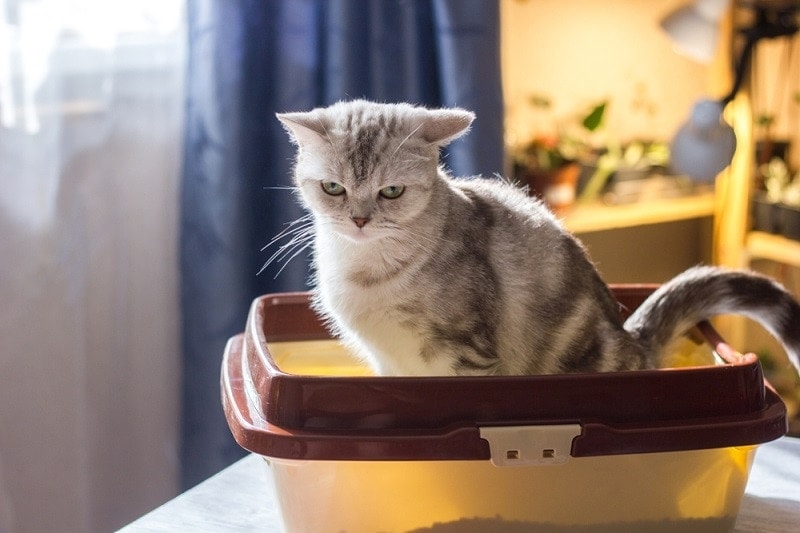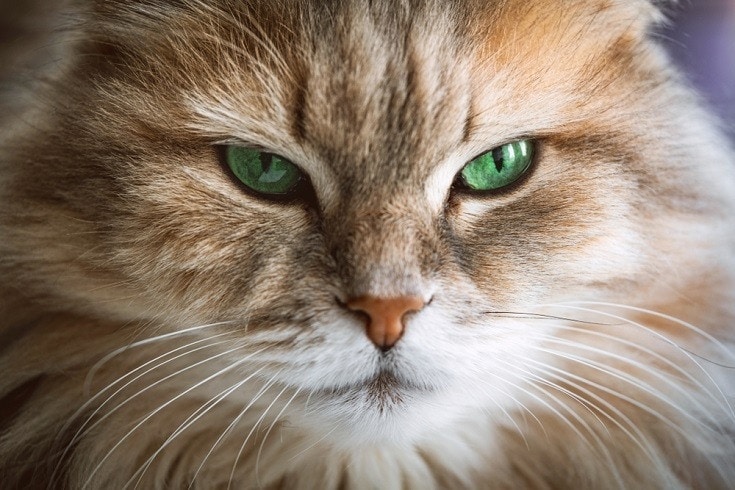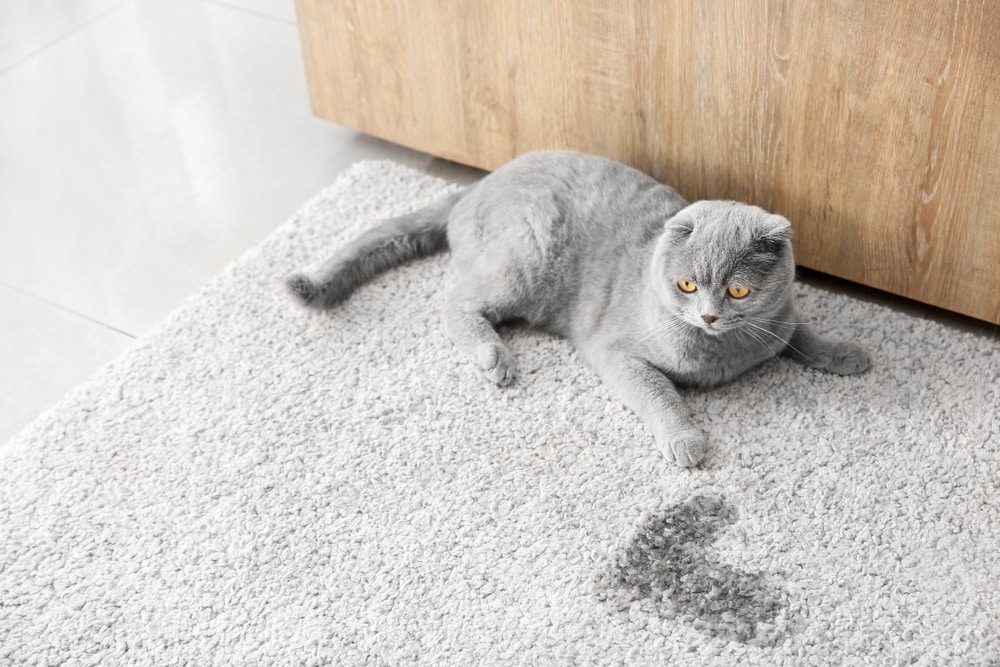Why Is My Cat Panting & Drooling? 7 Vet-Reviewed Reasons
Updated on
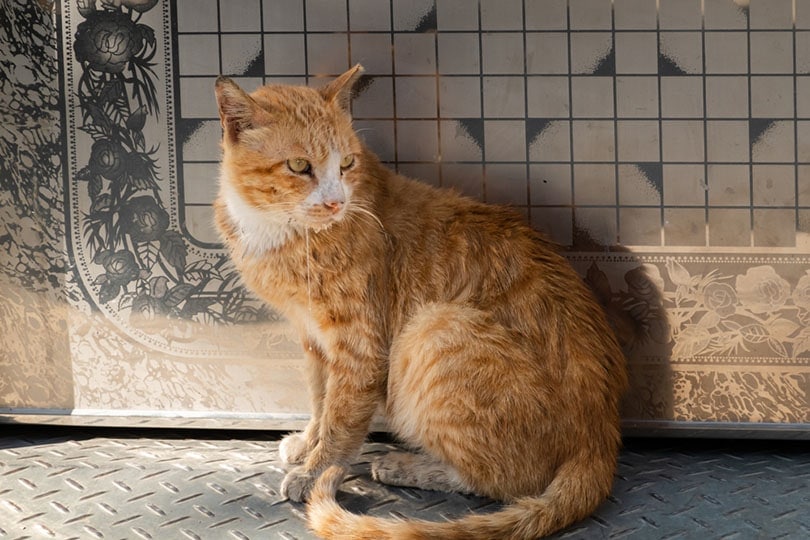
Your feline should not be panting and drooling all the time. This behavior can be expected in some cases, however, it typically signals that something isn’t right. Open-mouthed panting and drooling can indicate anxiety and stress (usually severe). Some cats are more sensitive to stress than others, which can cause them to pant and drool more often.
However, cats can pant and drool for a range of other reasons, too. In many cases, these underlying causes are serious and require veterinary intervention. Let’s take a close look at all the reasons why a cat may be drooling and panting so that you can decide if you need to head to the vet or not.
The 7 Vet-Reviewed Reasons Why Your Cat Is Panting & Drooling
1. Dental Issues
Sadly, dental issues are quite common in felines. While you can buy cat toothpaste, many cat owners do not use it regularly. A vet can perform in-depth cleanings on your cat’s teeth, which can prevent more serious problems from occurring. The most common of the two signs with dental disease would be drooling, panting doesn’t usually occur alongside.
Most dental problems can cause drooling, and the feline may even keep their mouth open in an attempt to correct some of the pain. A cat that is drooling or holding their mouth open is likely in considerable pain and distress, we recommend you contact your veterinarian for advice urgently.
The most common dental issue is periodontal disease, which causes the tissue around the tooth to become inflamed and infected. Periodontal diseases start as gingivitis, or inflammation of the gum. If the teeth are not cleaned, then the plaque will continue to develop and the condition worsen.
A range of other potential problems exist too, including abscesses.
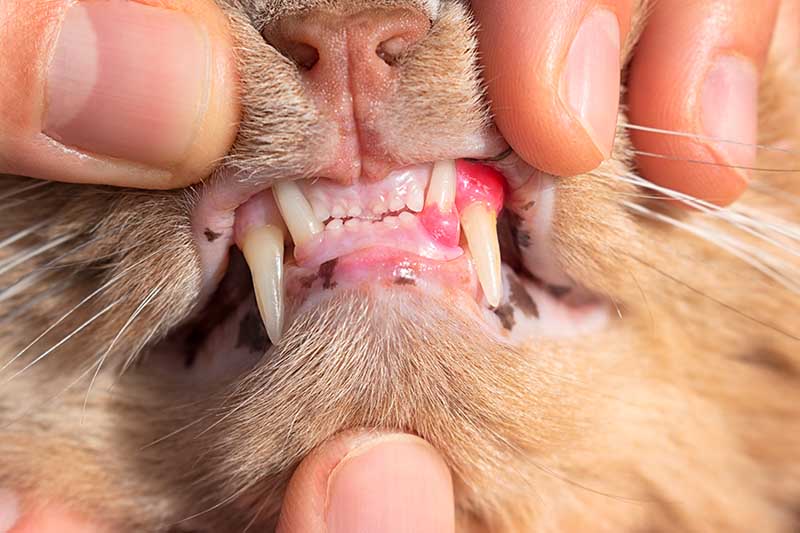
2. Heatstroke
Heatstroke can occur in cats, just like humans. This condition occurs when a cat’s internal body temperature becomes too high. As a result, their internal organs begin to shut down. All cats can get heatstroke if it becomes hot enough. However, cats with squished faces (brachycephalic) are more likely to get heatstroke, as they cannot cool themselves as well as other cats.
You should always provide your feline with some cover on hot days, as well as water. These two factors can do a lot to prevent heatstroke, though it can technically still occur anyway.
If you notice signs of heatstroke, you should attempt to cool your cat down quickly—but not too quickly. A sudden shift in body temperature can cause shock. Instead, simply bring your cat into a cool space to prevent the heatstroke from worsening and contact your vet urgently. Even if you get your cat cooled down, veterinary care is often required to prevent organ problems.
3. Foreign Body
A cat may drool and pant if there is an object stuck in their mouth and throat. The cat may be unable to swallow correctly, or they may not be able to close their mouth. Often, this occurs when felines get something stuck along the roof of their mouth, like a fish bone or stick. Cats can also get things stuck behind their soft palate or underneath their tongue.
If you think this may have occurred, carefully examine your cat’s mouth for potential objects. Take the object out if you can remove it easily without risking it going down your pet’s throat. If you cannot remove it, you’ll have to go to your vet. Never pull on a string that’s down your cat’s throat, as this can cause damage to the stomach and esophagus.
Sometimes, your cat may drool because they have a nasty taste in their mouth. Often, this occurs after they lick or attempt to eat something like a bad-tasting medication. This should settle fairly quickly and the cause is usually obvious.
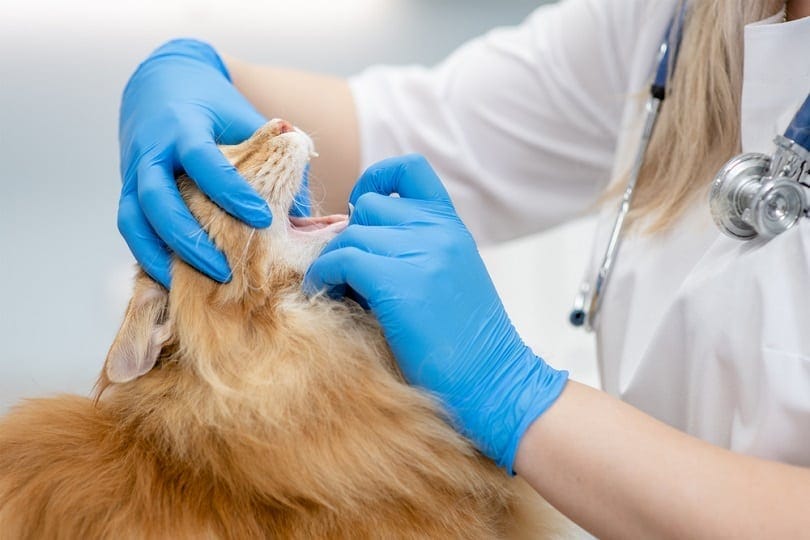
4. Toxins
Cats may pant after consuming something poisonous. This behavior is one of the body’s attempts to get rid of the toxin. Plus, many toxins just taste bad, so your cat likely won’t want to swallow them. Not all toxins have the same effects and consequences. Some are much more toxic than others.
Even if your cat isn’t experiencing any other signs, give your vet a call and explain what is going on. Take note of any potentially poisonous plants you have around your home, or anywhere else your feline may have gotten into a toxic material.
Often, serious symptoms of toxicity occur hours after they are ingested. Therefore, just because your cat isn’t showing any serious signs initially it doesn’t mean they won’t later. Getting your cat to the vet now can prevent potential problems later.
5. Organ Disease
In some cases, organ disease can lead to drooling, especially when it involves the liver and kidneys. Many older cats get these issues, but even younger felines can, too. Of course, you’ll need to head to your vet to check for these issues, usually through bloodwork. There isn’t always a way to fix organ damage, especially if your cat is older.
However, special foods, fluids and some medications may help prevent organ damage from becoming worse, which is vital if you want your cat to live a long life.
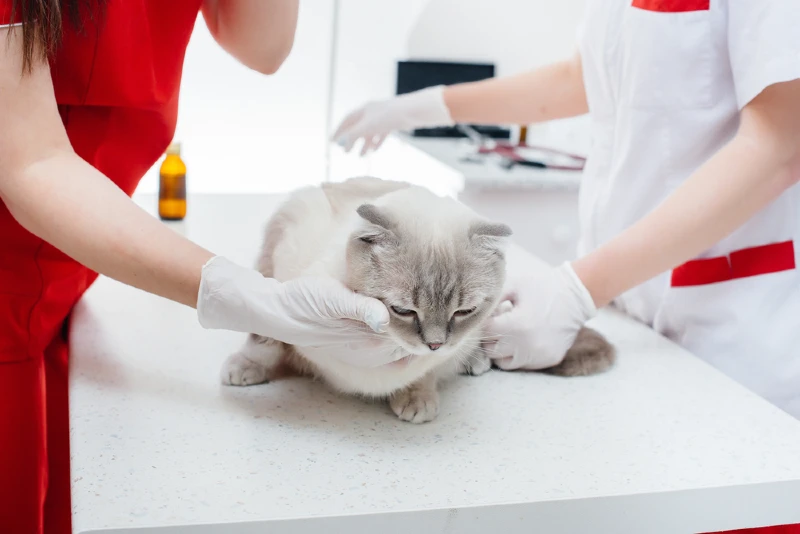
6. Respiratory Problems
Upper respiratory infections can cause sinus issues, just like in humans. Your cat may have a runny or stuffy nose, for instance. Sometimes, serious upper respiratory infections can even cause breathing problems, so your cat may pant. Any panting should prompt a visit to your veterinarian.
7. Nausea
If a cat is nauseated, then it may lead to drooling. Cats become nauseated for all sorts of reasons, including toxins and some other issues we’ve already discussed. However, if you’re switching your cat’s food or your cat has a minor stomach bug, drooling and nausea can occur. With that said, panting doesn’t usually occur due to nausea.
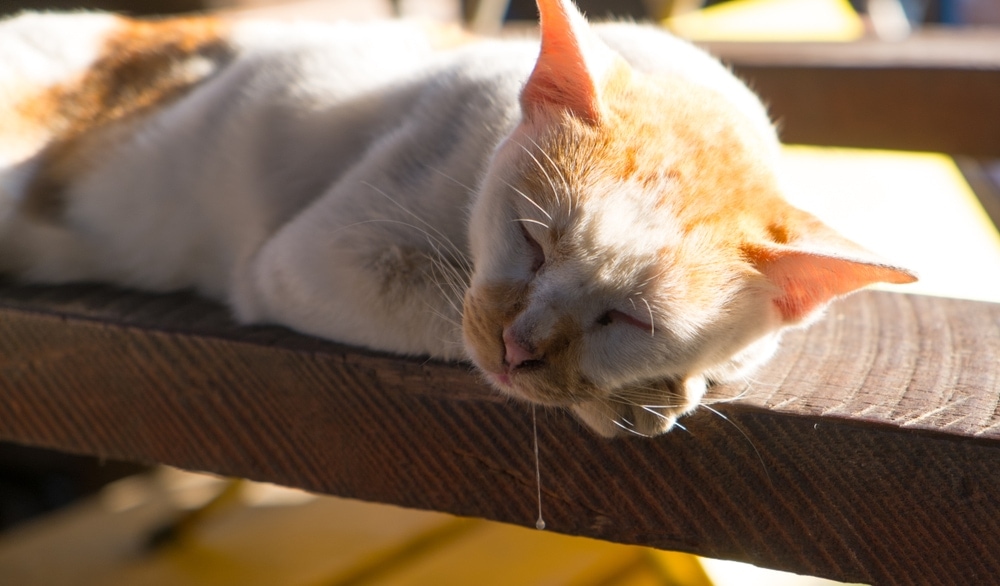
Why Is My Cat Drooling & Panting in the Car?
If your cat is perfectly fine and then starts panting in the car, it is likely due to stress. Many felines become stressed when in the car, especially if they aren’t used to it. Therefore, it isn’t odd for panting and drooling to occur, alongside other signs of anxiety. Make sure the car is not too hot and stop to help your kitty if necessary.
With that said, nausea can also occur in the car. Just like humans, cats can get motion sickness. When this occurs, they may pant and drool. There are medications available if your cat becomes motion sick easily. However, the best option is typically to slowly acclimate your cat to traveling in the car.
Final Thoughts
Cats typically drool and pant because of stress, heatstroke, or toxin exposure. However, there are several other, rarer conditions, too, respiratory problems and organ damage. In many cases, your cat needs to see a vet if they begin panting and drooling for no apparent reason, as it can be a sign of an underlying illness. Sometimes, this is considered an emergency, like when cats are exposed to toxins. In other cases, it may not be an emergency, though.
When in doubt, we always recommend contacting your vet. If your cat needs treatment, it is best to get it right away.
Featured Image Credit: elwynn, Shutterstock



